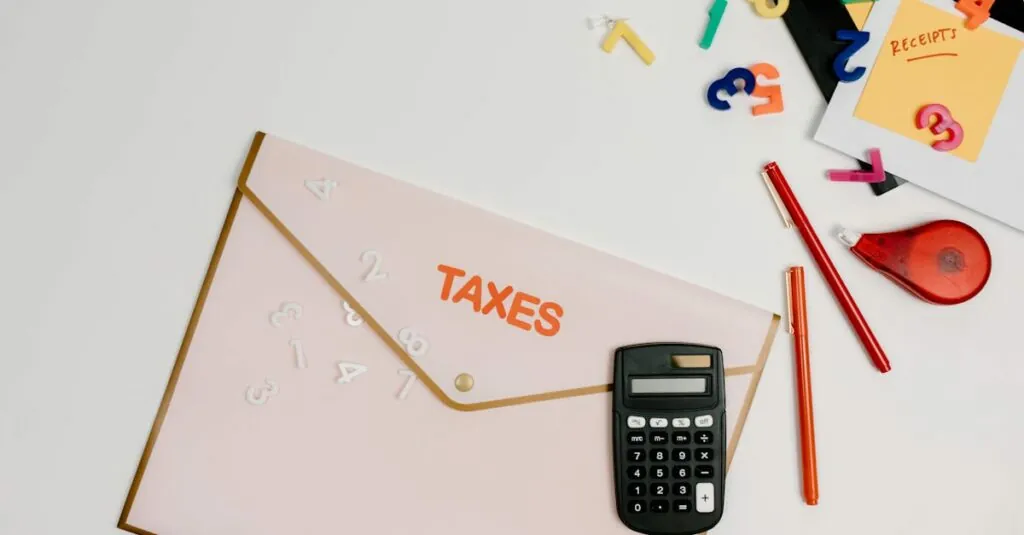In a world where money seems to vanish faster than socks in a dryer, envelope budgeting might just be the superhero your finances need. Picture this: cash neatly tucked away in labeled envelopes, each representing a specific spending category. It’s like giving your money a little vacation, with each envelope enjoying its own getaway while you keep your spending in check.
One standout benefit of this method is its ability to curb impulse purchases. With cash in hand and envelopes in sight, it’s hard to justify that spontaneous trip to the coffee shop when your “fun money” envelope is looking a bit too thin. Embracing envelope budgeting not only helps keep your finances organized but also transforms you into a savvy spender. Who knew managing money could feel like a fun game of financial Tetris?
Table of Contents
ToggleUnderstanding Envelope Budgeting
Envelope budgeting serves as a practical approach to managing finances. By using cash envelopes, individuals allocate funds for specific spending categories. This visual representation aids in financial organization.
What Is Envelope Budgeting?
Envelope budgeting involves categorizing cash into labeled envelopes designated for particular expenses such as groceries, entertainment, and savings. When cash runs out in an envelope, spending for that category stops. This method enhances awareness of financial limits, promoting disciplined spending habits.
The Basics of Budgeting Techniques
Budgeting techniques encompass various strategies aimed at controlling expenses and managing money. Traditional methods include zero-based budgeting, where every dollar is assigned a purpose, and the 50/30/20 rule, advocating for specific allocation of income. While each technique varies, envelope budgeting stands out for its simplicity and visual impact, helping individuals stay on track with spending plans.
What Is One Benefit of Envelope Budgeting?
One key benefit of envelope budgeting involves its ability to boost spending awareness.
Enhanced Spending Awareness
Visualizing cash in each envelope creates a strong sense of where money goes. Individuals quickly recognize the allocated amounts for specific categories like groceries or entertainment. This method makes it easier to track spending habits, leading to more informed decisions. By using cash, a tangible reminder exists that reinforces what remains in each category. Avoiding over-expenditure becomes simpler as withdrawals directly reflect available funds. Consequently, heightened awareness supports a disciplined approach to spending, guiding strategies to maintain financial goals effectively.
Control Over Finances
Envelope budgeting fosters control over personal finances. Individuals set defined limits for each spending category, maintaining clarity around financial priorities. When cash runs low in an envelope, it signals the need to adjust spending habits. This proactive approach reduces reliance on credit or impulse purchases, promoting responsible financial behavior. Individuals experience less stress, significantly increasing confidence in managing money. A consistent strategy leads to better financial outcomes as they align their spending with actual income. Simple adjustments become achievable, allowing adjustments based on changing financial circumstances or goals.
Practical Implementation of Envelope Budgeting
Implementing envelope budgeting requires thoughtful planning and a clear understanding of individual financial needs. This method empowers users to allocate specific amounts of cash to various spending categories.
Setting Up Your Envelopes
Establishing envelopes begins with identifying categories for budgeting. Common categories include groceries, transportation, entertainment and utilities. Next, determine monthly spending limits for each category based on income and expenses. By labeling envelopes clearly, individuals keep track of their designated funds. Placing cash within each envelope helps prioritize spending. Allocate only what fits within the planned limits to avoid overspending in any single area. Adjust categories periodically as financial goals and requirements change.
Tracking Your Spending
Monitoring spending involves regular checks of envelope balances. Individuals should take note each time they make a purchase, ensuring that amounts align with envelope limits. Recording transactions helps build financial accountability, making it easier to spot trends or adjust behaviors. Evaluating spent amounts against allocated funds allows for informed decisions about future budgeting. Keeping the process consistent aids in understanding financial habits better. Set reminder intervals to reassess and adapt spending categories as necessary.
Common Challenges
Even with its benefits, envelope budgeting presents some challenges. Recognizing these challenges ensures effective management of finances.
Overcoming Budgeting Pitfalls
Individuals often encounter common pitfalls when using envelope budgeting. For instance, miscalculating the amount needed for each category results in financial strain. Unexpected expenses may arise, leaving them without funds in specific envelopes. One solution includes setting aside a small buffer in each envelope to cover unforeseen costs. Regularly reviewing spending habits also helps maintain alignment with financial goals. Tracking expenses through logs or apps reinforces accountability and enhances awareness, ensuring individuals stay on budget.
Staying Committed to the Plan
Staying committed to an envelope budgeting plan can prove challenging. Life circumstances might change, prompting adjustments to spending categories and limits. Maintaining discipline requires individuals to revisit their budgets monthly to assess needs and priorities. Setting reminders for envelope check-ins ensures individuals monitor their spending effectively. Sharing budget goals with friends or family adds an additional layer of accountability. By fostering a supportive environment, individuals find encouragement in remaining committed to their financial plans.
Envelope budgeting offers a straightforward yet powerful way to take control of personal finances. By visually allocating cash for specific categories, individuals can cultivate a deeper awareness of their spending habits. This method not only curbs impulse purchases but also promotes a sense of discipline and accountability. As users regularly assess their envelope balances and adjust their budgets, they develop a more informed approach to managing their money. Ultimately, embracing envelope budgeting can lead to reduced financial stress and a greater confidence in achieving financial goals. Adopting this technique may just be the key to transforming one’s relationship with money.





